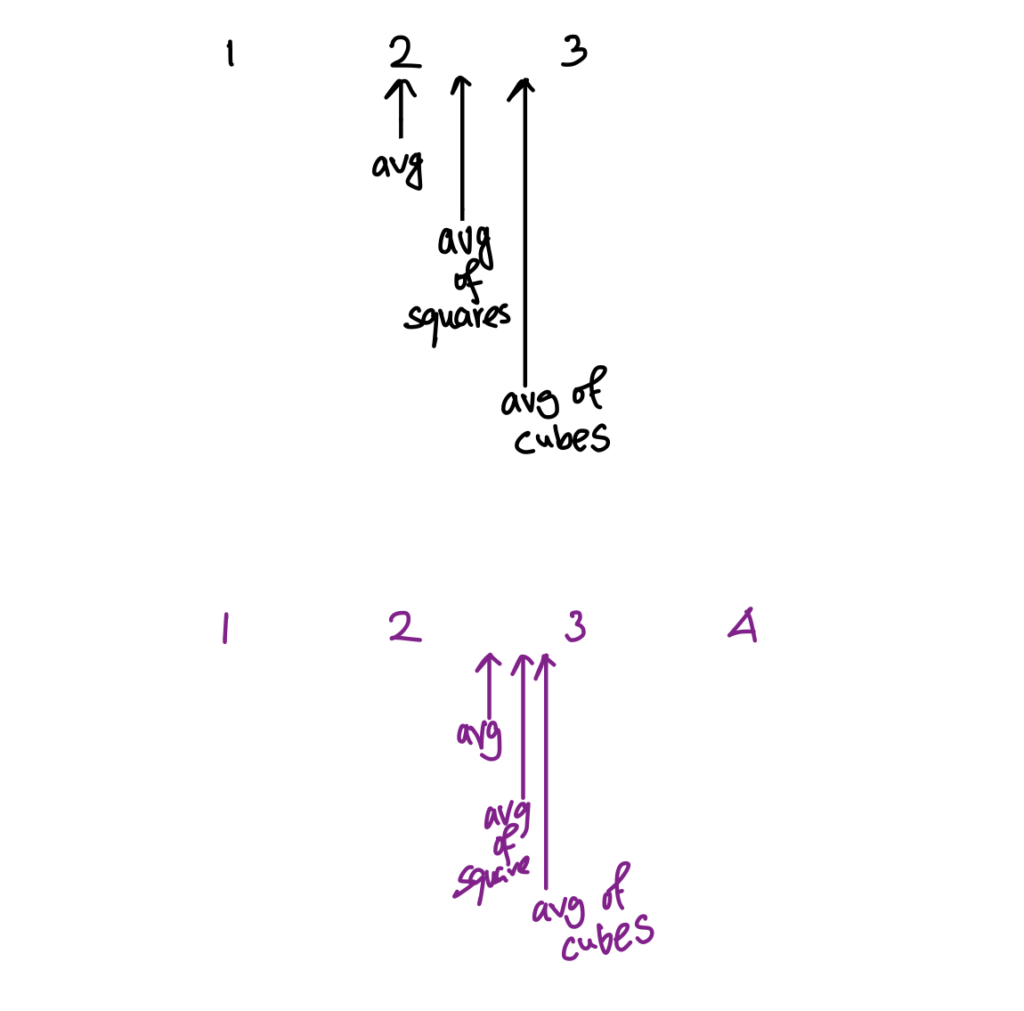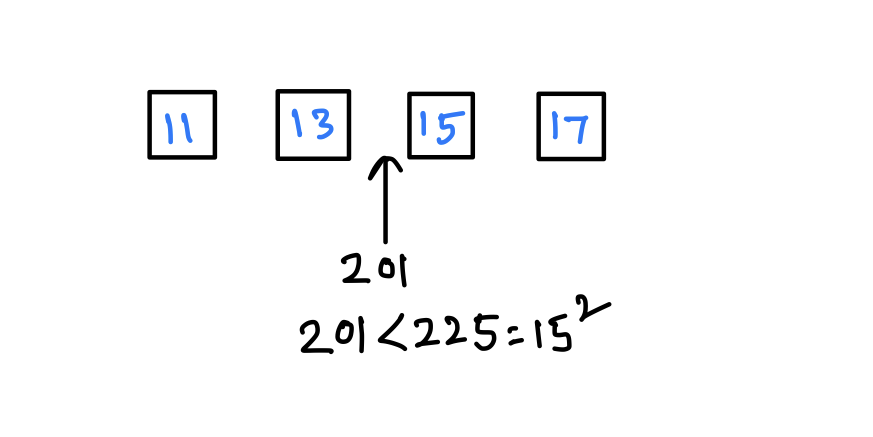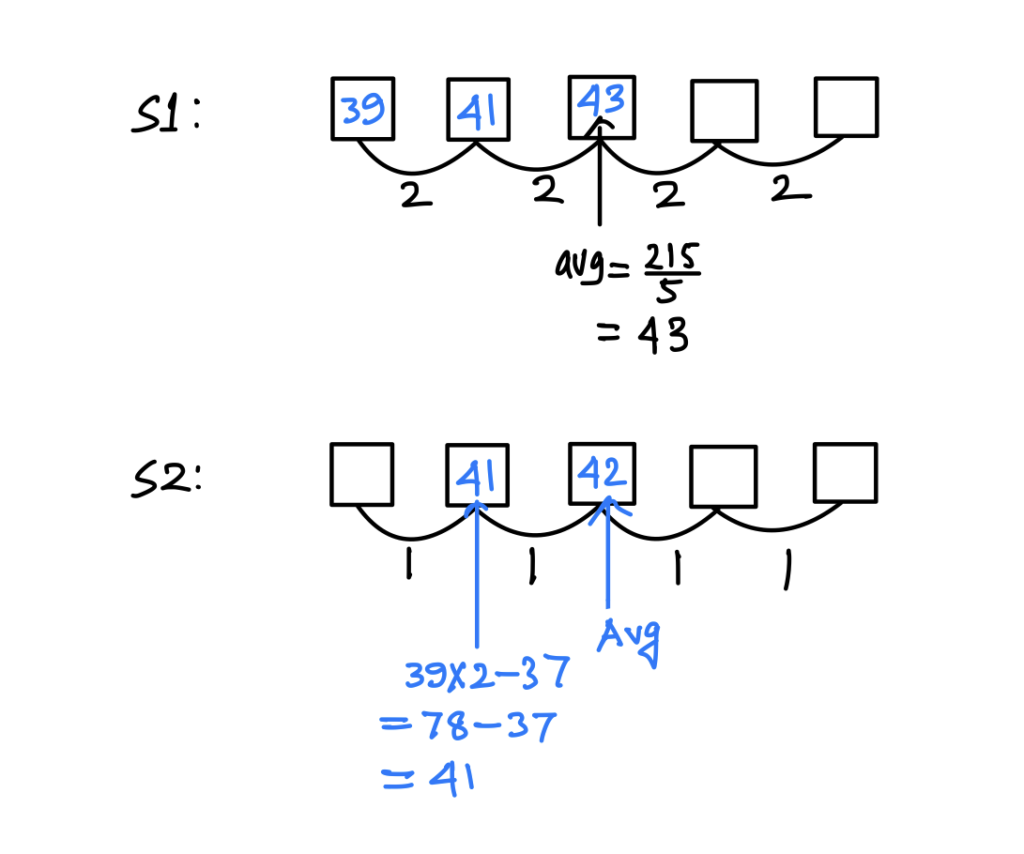What is Arithmetic Progression?
This is a series of numbers where differences between any two consecutive number remain same.
For example: 2, 4, 6, 8 will be in AP since difference here is always 2
Give some example of AP series.
| Case | Example | Difference |
| Consecutive Number | 1, 2, 3, 4, … 7, 8, 9, 10, … | 1 |
| Even Numbers | 2, 4, 6, 8, … 90, 92, 94, … | 2 |
| Odd Numbers | 1, 3, 5, 7, … 567, 569, 571, … | 2 |
| Multiple of numbers | 11, 22, 33, 44, … 19, 38, 57, 76, … multiple of n | 11 19 n |
Average of AP Series
If you are asked to find average of 1, 3, 5, you will find it as 3 which is middle number of given series. And the average is at 2nd position.
Or if you are asked to find average of 1, 3, 5, 7, you will find it as 4 which is exactly middle number of given series. And the average is at at 2.5th position
So, we could say that In a AP series average lies exactly in the middle.
We know, Sum of AP series = \displaystyle \frac{n}{2} \left(a+l\right)
Here, a = first term and l = last term
∴ Avg = \displaystyle\frac{a+l}{2}
Considering all,
Avg = Middle term of AP Series
= \displaystyle\frac{\text{first term}+\text{last term}}{2}
= \displaystyle\frac{\text{2nd term}+\text{2nd last term}}{2}
= ⋮
How to find position of middle number in a AP series?
Odd number series with n element:
Middle term at = \displaystyle \left( \frac{n+1}{2}\right)^{\text{th}} position
Even number series with n element:
Middle term lies between \displaystyle \left( \frac{n}{2}\right) and \displaystyle \left( \frac{n}{2}+1\right)^{\text{th}} position
Here middle term at = \displaystyle \left( \frac{n}{2}+0.5\right)^{\text{th}}
So, for both the cases, middle term at = \displaystyle \left( \frac{n+1}{2}\right)^{\text{th}} position
Average of squares and cubes of numbers in AP series
Average will be shifted to slight right in case of squares of numbers in AP series and more to right in case of cubes of numbers in AP series.
See the position of averages for 3 numbers and 4 numbers in the following picture.

Problems on Average of AP Series
Question: The average of 7 consecutive numbers is 33. The largest of these numbers is
(a) 30
(b) 32
(c) 36
(d) 40
Ans: (c) 36
Explanation:
Middle term = \displaystyle\frac{7+1}{2} = 4th = 33
Largest term (7th) = 33 +3 = 36
Question: Average of 27 consecutive even numbers is 82. Find the largest and smallest number.
(a) 108, 56
(b) 109, 55
(c) 110, 54
(d) None of these
Ans: (a) 108, 56
Explanation:
It s a series of even numbers, hence gap between numbers = 2
Middle term = \displaystyle\frac{27+1}{2} = 14th = 82
Largest term (27th)
= 82 + 2(27 – 14)
= 82 + 26
= 108
Smallest term (1st)
= 82 – 2(14 – 1)
= 82 – 26
= 56
Aliter(By Formula)
This formulae are only applicable to consecutive even and odd numbers.
Highest No = avg + (n – 1)
Lowest No = avg – (n – 1)
Here, avg = 82
and n – 1 = 27 -1 = 26
∴ Highest No = 82 + 26 = 108
Lowest score = 82 – 26 = 56
Question: Average of 14 consecutive odd numbers is 38. Find the largest and smallest number.
(a) 50, 26
(b) 51, 25
(c) 52, 24
(d) None of these
Ans: (b) 51, 25
Explanation:
It s a series of odd numbers, hence gap between numbers = 2
Middle term = \displaystyle\frac{14+1}{2} = 7.5th = 35
Largest term(14th)
= 38 + 2(14-7.5)
= 38 +13
= 51
Smallest term (1st)
= 38 – 2(7.5-1)
= 38 – 13
= 25
Aliter(By Formula)
Highest No = 38 + 13 = 51
Lowest score = 38 – 13 = 25
[Similar Question] ⟶ 2017 (Q2) of Average PYQs of CGL
Question: Average of 13 consecutive multiples of 11 is 14641. Find the second largest number of the series
(a) 14652
(b) 16496
(c) 14696
(d) 14608
Ans: (c) 14696
Explanation:
Here 1 gap = 11
Middle term = \displaystyle\frac{13+1}{2} = 7th = 14641
Second largest term (12th)
= 14641 + 11(12-7)
= 14641 + 11 × 5
= 14641 + 55
= 14696
Question: Average of 8 consecutive multiples of 17 is 49189.5. find the second smallest number of the series.
(a) 49197
(b) 49497
(c) 49147
(d) 49749
Ans: (c) 49147
Explanation:
Here, 1 gap = 17
Middle term = 4.5th = 49189.5
Second smallest no (2nd)
= 49189.5 – 17(4.5 – 2)
= 49189 – 17 × 2.5
= 49189 – 42.5
= 49197
Question: Average of 6 consecutive multiples of 19 is 4322.5. find the second largest number of the series.
(a) 4313
(b) 4332
(c) 4351
(d) 4370
Ans: (c) 4351
Explanation:
Here, 1 gap = 19
Middle term = 3.5th = 4233.5
Second largest (5th)
= 4322.5 + 19(5 – 3.5)
= 4322.5 + 19 × 1.5
= 4322.5 + 28.5
= 4351
Question: The average of squares of five consecutive odd natural numbers is 233. What is the average of the largest and smallest number?
(a) 15
(b) 17
(c) 11
(d) 13
Ans: (a) 15
Explanation:

Middle term = 3rd
Average of squares lies between 3rd and 4th
Now a square of odd number which is immediate less than 233 is 225 which is 152
So, we have got 3rd term = 15 and got the other term accordingly, since it’s a odd number series, gap = 2
Avg = middle term = \displaystyle\frac{\text{first term}+\text{last term}}{2}
Hence, avg = 15
Aliter(By Traditional Method)
Let, the numbers are a-4, a-2, a, a+2 and a+4
According to the question,
(a-4)2 + (a-2)2 + a2 + (a+2)2 + (a+4)2 = 233 × 5
⇒ {(a-4)2 + (a+4)2} + {(a-2)2 + (a+2)2} + a2 = 233 × 5
⇒ 2(a2 + 16) + 2(a2 + 4) + a2 = 233 × 5
⇒ 5a2 + 40 = 233 × 5
⇒ a2 + 8 = 233 [Dividing both side by 5]
⇒ a2 = 225
⇒ a = 15
Hence, numbers are 11, 13, 15, 17, 19
Traditional method will consume more time. So we will go for the previous technique.
Question: The average of squares of four consecutive odd natural numbers is 201. The average of 7 times the largest and 3 times the smallest number is :
(a) 72
(b) 78
(c) 76
(d) 66
Ans: (c) 76
Explanation:

Question: The average of squares of four consecutive even numbers is 126. The average of 8 times the greatest and 5 times the smallest number is
(a) 66
(b) 76
(c) 68
(d) 74
Ans: (b) 76
Explanation:

Question: The sum of 5 consecutive odd numbers is 215. What is the sum of a different set of 5 consecutive numbers whose second lowest number is 37 less than double of the lowest of the first set?
(a) 210
(b) 230
(c) 250
(d) 240
Ans: (a) 210
Explanation:

Hence, sum of second series = 42 × 5 = 210
You may find the all numbers of S1 and S2, but we have found only those required for calculation.
Question: S1 is the series of five consecutive multiples of four, whose sum is 100 and S2 is the series of four consecutive even numbers. If the second number of S2 series is 6 less than highest number of S1 series, find the average of S2 series.
(a) 32
(b) 23
(c) 25
(d) 21
Ans: (b) 23
Explanation:



Pingback: Previous Year Average Questions For SSC CGL Mains/Tier II till date [Updating...]